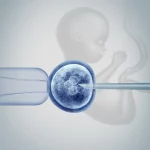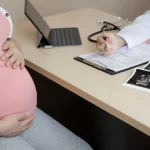
This article explains chronic endometritis (CE) and its role in the Uterine & Implantation (RIF/RPL) pathway. It focuses on the diagnostic and treatment choices that actually change outcomes, budgets, and timelines—so you can move forward with clarity and confidence.
What It Is
Chronic endometritis is a low-grade, often silent inflammation of the uterine lining caused by persistent infection. In plain English: it can make the uterine environment less receptive, lowering implantation and pregnancy odds. Detecting and treating CE before transfer can directly improve outcomes.
Who It Helps
This pathway is especially relevant for:
- Patients with recurrent implantation failure (RIF) or recurrent pregnancy loss (RPL)
- Women with irregular bleeding, pelvic pain, or chronic infections
- Those with abnormal hysteroscopy findings (e.g., micropolyps, edema)
- Patients whose labs or biopsy results suggest inflammation
Step-by-Step
A simple sequence with timing checkpoints:
- Screening — endometrial biopsy, hysteroscopy, or special stains (CD138, immunohistochemistry).
- Diagnosis — confirm CE vs. other causes of inflammation.
- Treatment — usually antibiotics, sometimes repeated biopsy to confirm clearance.
- Recovery window — allow uterine lining to heal before transfer.
- Embryo transfer — proceed once uterine environment is confirmed receptive.
Pros & Cons
Pros:
- Can improve implantation and live-birth rates after treatment
- Straightforward diagnosis with biopsy or hysteroscopy
- Treatment is usually short and non-surgical (antibiotics)
Cons:
- Some clinics over-diagnose or overtreat
- Biopsies add cost and discomfort
- Results may be inconclusive, requiring repeat testing
Costs & Logistics
- Line items: biopsy, lab analysis, hysteroscopy, antibiotics
- Insurance: may require pre-authorization for biopsy or hysteroscopy
- Cash flow: antibiotic treatment is inexpensive, but repeated testing can add cost
- Tracking: keep biopsy dates aligned with cycle planning to avoid delays
What Improves Outcomes
- High-quality diagnostic testing (CD138 staining or hysteroscopy with biopsy)
- Completing the full antibiotic course and confirming clearance
- Avoiding embryo transfer until lining inflammation is resolved
- Good communication between lab, doctor, and patient to prevent missed timing
Case Study
A 34-year-old with 3 failed IVF transfers underwent hysteroscopy, revealing micropolyps and confirmed chronic endometritis. After two weeks of antibiotics and a follow-up biopsy showing resolution, her next transfer resulted in a successful pregnancy. The key difference: identifying and treating CE before proceeding.
Mistakes to Avoid
- Skipping testing for CE in patients with RIF or RPL
- Assuming all endometrial issues are solved by antibiotics without biopsy confirmation
- Ignoring follow-up biopsy to check treatment success
- Poor cycle planning that leads to delays or repeated treatments
FAQs
Q. How common is chronic endometritis in IVF patients?
Ans : Studies suggest 10–30% of women with RIF or RPL may have CE, making it a hidden but important factor.
Q. How is chronic endometritis diagnosed?
Ans : The gold standard is an endometrial biopsy with CD138 staining. Hysteroscopy can also reveal visual signs like micropolyps or stromal edema.
Q. What is the typical treatment?
Ans : Usually a 1–2 week course of oral antibiotics (e.g., doxycycline). In persistent cases, additional antibiotics or repeat biopsies may be needed.
Q. Does treating CE improve IVF outcomes?
Ans : Yes. Treating CE before transfer has been linked to higher implantation and live-birth rates compared to untreated cases.
Q. Do I need a repeat biopsy after treatment?
Ans : Many clinics recommend it, as CE can persist even after antibiotics. A follow-up biopsy confirms whether the uterine lining is receptive before transfer.
- Free 15-min nurse consult
- Upload labs & biopsy reports for review
- Cost breakdown tailored to your case
Related Links

Dr. Kulsoom Baloch
Dr. Kulsoom Baloch is a dedicated donor coordinator at Egg Donors, leveraging her extensive background in medicine and public health. She holds an MBBS from Ziauddin University, Pakistan, and an MPH from Hofstra University, New York. With three years of clinical experience at prominent hospitals in Karachi, Pakistan, Dr. Baloch has honed her skills in patient care and medical research.





